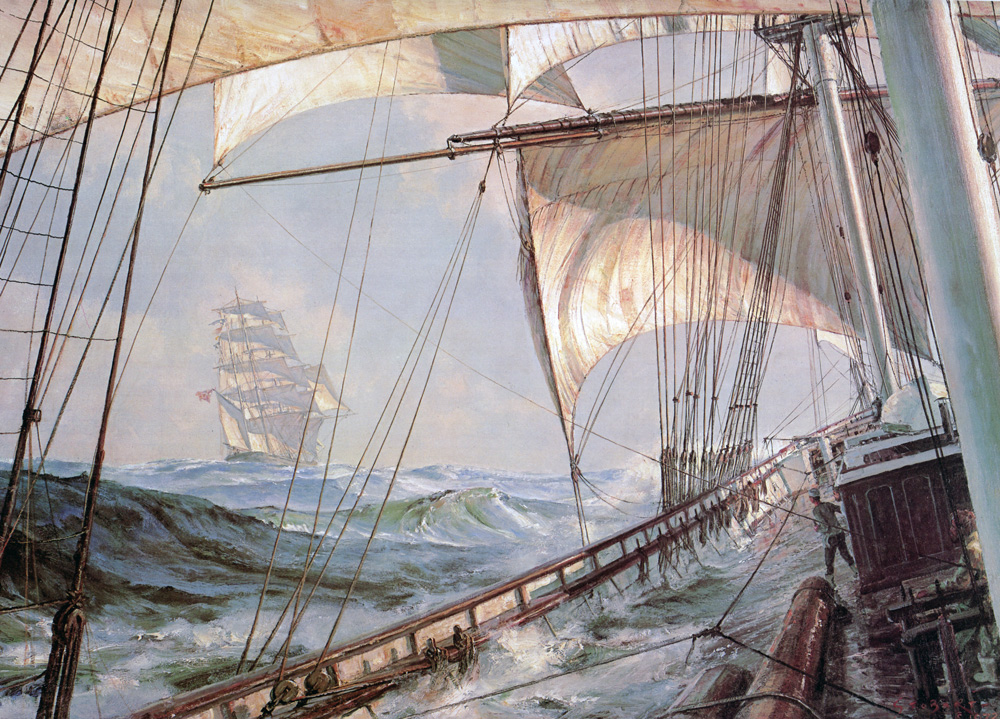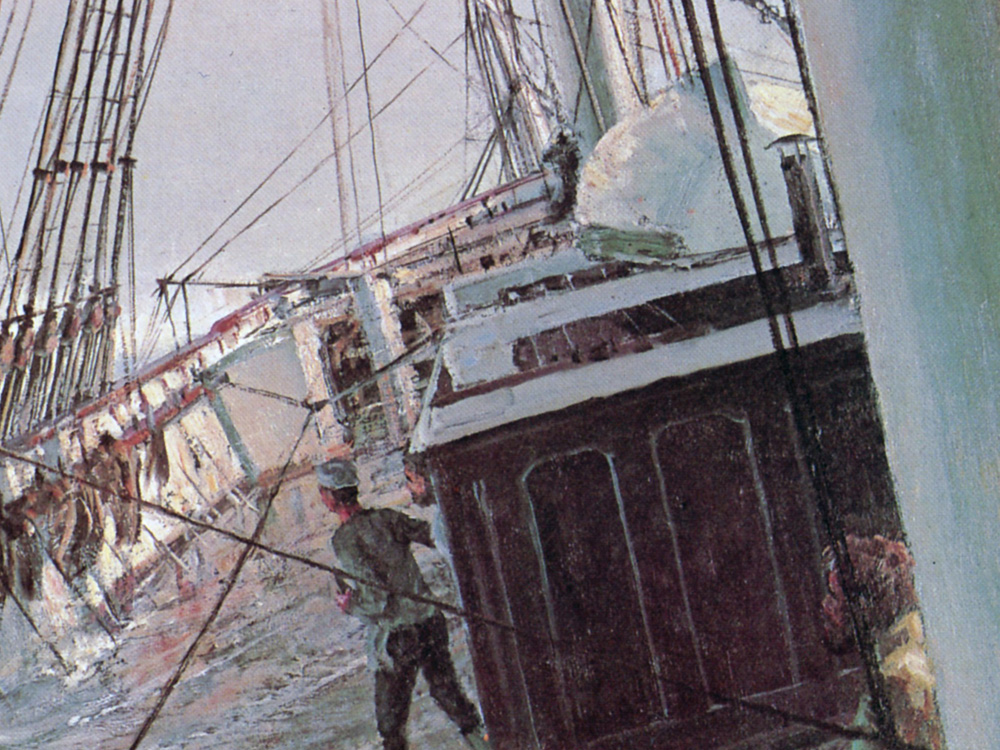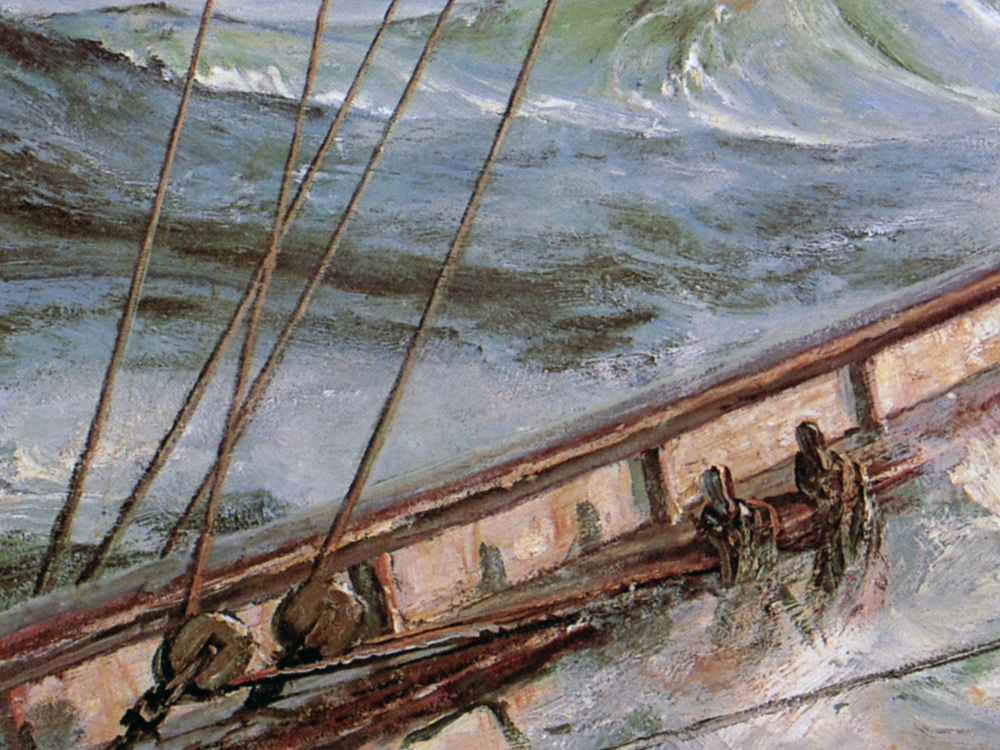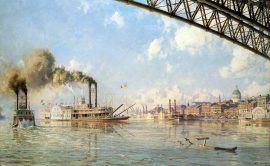Decks Awash
$1,200.00 Original price was: $1,200.00.$1,080.00Current price is: $1,080.00.
Completed in 1972, this painting was inspired during sit to Greenwich, England, where near to London's National Maritime Museum the tea clipper, Cutty Sark, is splendidly preserved in a special dry dock. For me, always a student of hull shapes and rigging, the sight of this magnificent ship evoked a strong emotional response—I recall almost choking up. Such is my sometimes embarrassing reaction to real perfection, whether in the performing arts, music, or man made masterpieces. The Cutty Sark is an incredible eyeful.
I was awed by the shape of the ship below the waterline, especially when viewed from forward. It seems almost incomprehensible that this fine vessel could remain upright in a strong gale. The sharpness of the cutwater, with the lower hull not reaching full beam until way aft of the foremast, had me staring in disbelief.
Going aboard, I found more surprises. Here was one of man's finest creations, truly an engineering masterpiece. Looking up into the complexity of the rigging, I recalled my colleague Tom Wells' comment that marine artists today often fail to show enough blocks in the rigging. Tom, who as a young man experienced a voyage around the Horn under sail, reminded us that there were some 150 blocks operating on each mast. Each crew member had to know by touch, in the pitch black of night, which rope or halyard—out of hundreds— was which. In emergencies, which struck regularly, the command to adjust sails from deck had to be carried out instantly, and to the letter.
Generally speaking, I find portraying ships at sea to be somewhat thin in compositional challenge. I have always therefore much preferred to depict ships in an inshore setting, which gives so much potential for compositional variety and interest. A view on the deck of any squared-rigged ship does, however, give more of a challenge and a chance to convey a sense of drama.
Visualizing this scene on board the Cutty Sark that day, it occurred to me that showing another vessel off in the middle distance, through the rigging, would create the feeling o catching up in a race. In those days the first vessel to arrive in London with the new crop of tea from the Orient attracted great attention, the crew becoming celebrated for their achievement and the ship and her owner avidly sought after for future cargoes.
Out of stock
| Weight | 6.00 lbs |
|---|---|
| Catalog: | Stobart-044 |
| Artist: | John Stobart |
| Dimensions: | 20 3/4" x 30" |














